Creating a tiered garden can be an exciting project that adds visual interest to outdoor spaces. It elevates plants and structures while providing additional layers of dimension and texture.
This guide will answer common questions, provide useful tips, and offer ideas on creating tiered gardens to bring your vision to life.
Tiered Garden Ideas
Several tiers on a sloped property
When planning tiered gardens on a sloped property, the project can be divided into several tiers. The higher tiers will require retaining walls while the lower ones will only need some kind of edging to separate them from other areas.
A good idea is to create a series of terraced beds that ascend up the slope and use different plants for each tier.
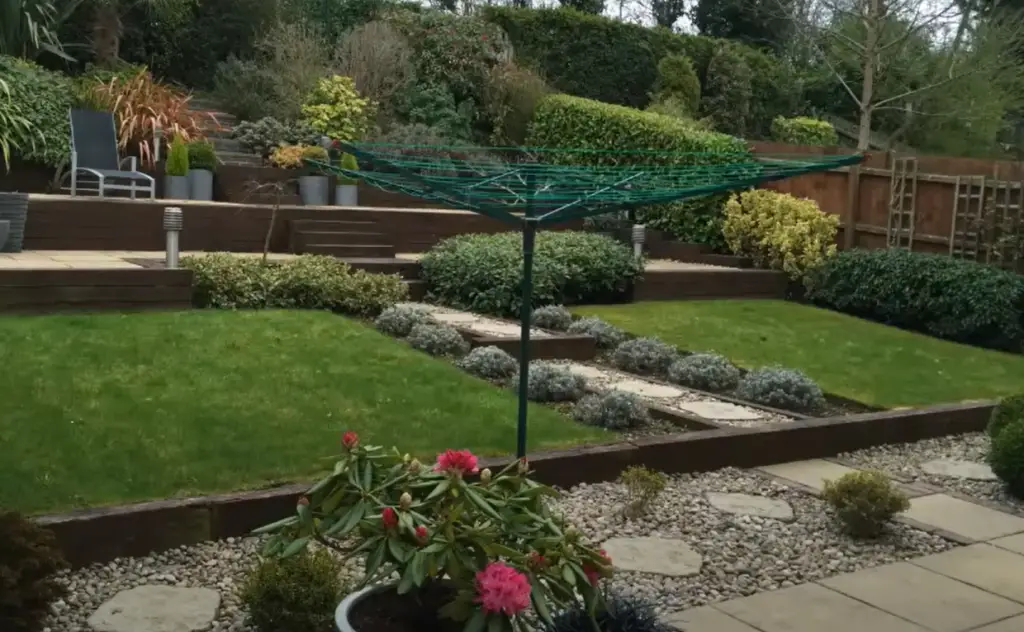
For example, the top terrace could include a selection of evergreen shrubs for a lush backdrop; the second terrace could feature flowering perennials such as iris and poppies; and the bottom terrace might have ornamental grasses to bring in texture and height.
Wood rustic edge
Using wooden boards or logs to outline the tiers is an attractive and rustic idea. This type of edging works best on terraced beds with a difference in elevation between each tier, as it gives a more defined border.
To ensure the wood lasts longer, choose weather-resistant varieties such as cedar or redwood. The pieces should also be treated with preservative and sealed before installation.
Multi-level space for diversion
Creating multiple levels in your garden is a great way to add interest and draw the eye. This could include adding steps or structures such as an arbour or gazebo.
Try incorporating winding paths between tiers with different elevations that lead to different parts of your space, allowing you to explore and discover new areas while enjoying your outdoor oasis.
Uneven sloped backyard
An uneven sloped backyard can present a challenge when creating tiered gardens, but it’s not impossible.
However, this usually requires professional help and can be expensive. An easier alternative is to use raised beds that are filled with soil and planted with various flowers and shrubs.
This will help create the illusion of tiers, without needing to rearrange the landscape too much.
Opportunities for growing garden
Tiered gardens offer plenty of opportunities for creative growth. Take advantage of the different tiers by planting flowers and edibles in interesting combinations.
Growing a mix of foliage, herbs, and veggies on each level is also an enticing way to add colour and texture while providing fresh produce all season long.
Additionally, consider using trellises or other vertical structures to maximise the space and add variety.
The contemporary landscape
For a contemporary look, try using modern materials to edge the tiers. Concrete pavers, metal edging, and decorative rocks are all popular choices for creating sleek and stylish tiered gardens.
This type of design is best suited for spaces with a more uniform slope as it allows you to create even divisions between each tier. It’s also great for modern homes, as the clean lines and minimalistic elements will help complete the look.
Play with boulder rocks
If you want to bring a more natural feel to your tiered gardens, then play with boulder rocks. These large stones can provide the perfect backdrop for low-growing plants such as groundcovers and small shrubs.
Placing boulders randomly on each tier will create an attractive landscape while ensuring soil erosion is kept at bay. Plus, the stones will provide an ideal habitat for wildlife and add a rustic charm to your outdoor space.
Go for sleek paving
If you want to achieve a more formal vibe, then consider going for sleek paving stones. This type of edging works well on terraces with a gradual slope and can be used to create uniform tiers that look neat and tidy.
Multi-leveled secret garden hideaway
For a truly unique and whimsical look, why not create a multi-leveled secret garden hideaway. This type of tiered garden offers plenty of opportunities for exploration and discovery.
Choose from different types of plants to fill the tiers – lush foliage, delicate flowers, climbing vines – and add features such as benches, arbours, and water features.
The end result will be a magical space that provides you with a peaceful escape from your daily life.
Level up your decking
If you have a deck in your outdoor space, then tiered garden ideas can be used to level it up. By adding steps or raised beds around the perimeter of your deck, you can create an attractive multi-leveled look.
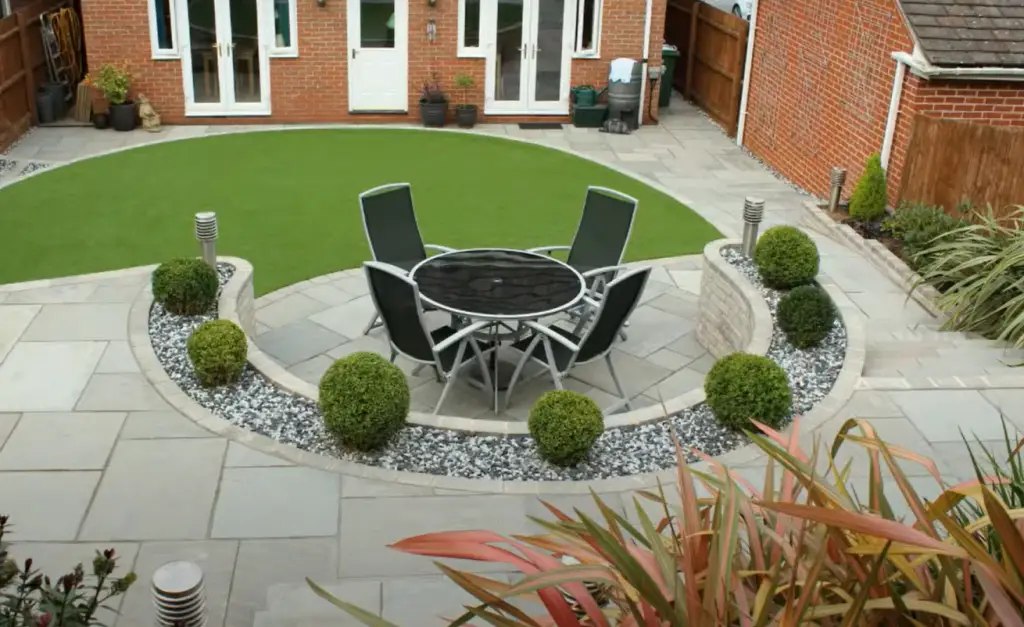
This is great for creating differentiation between different areas and also provides more growing opportunities for plants and shrubs that thrive in shaded environments.
Tiered retaining wall
For larger spaces, a tiered retaining wall is another excellent option. This type of structure allows you to create multiple levels that are perfect for growing plants and vegetables.
Plus, it can be used to help with soil erosion and offers additional seating or storage opportunities. When designing your wall, it’s important to consider the size and shape of the space as this will determine the size and shape of your tiers.
Give your pool its own level
If you have a swimming pool, then give it its own level. You can create tiered gardens around the perimeter of the pool to add visual interest and provide a space for lounging or entertaining.
The tiers can be filled with flowers, grasses, and other low-maintenance plants that will thrive in these environments.
Additionally, you can use the tiers to create a privacy screen or add accent lighting for an extra touch of glamour.
Front yard hill landscape
A tiered garden is a great way to make the most of a hilly front yard landscape. You can create separate tiers that are connected with winding pathways or small steps.
Each tier can be filled with vibrant flowers, shrubs, and trees for added visual impact. The tiers can also provide seating opportunities – perfect for admiring the view of your outdoor space.
Sink it down
If you want to create an interesting focal point in your garden, then consider sinking a tiered garden. This is great for smaller spaces and allows you to add texture and depth without taking up too much room.
The tiers can be filled with flowering plants or vegetables and the sunken feature will help keep them protected from strong winds and other environmental factors.
Devise a fire pit destination
Consider creating a tiered garden around your outdoor fire pit. This can provide an additional seating area and also create a great backdrop for those long summer evenings spent roasting marshmallows.
The tiers can be filled with colourful plants and you can even add features such as lights or water features to make the space truly special.
Steps lined with modern planters
If you have a contemporary outdoor space, then consider lining your steps with modern planters. This is a great way to add an extra touch of style and provide additional planting opportunities for flowers or herbs.
You can also use this tiered garden idea to create a feature wall with trailing plants or vines added for an extra hint of drama.
Squeeze in a vegetable patch
Even if you don’t have much room in your garden, you can still squeeze in a vegetable patch with the help of tiered gardens. You can create small tiers and use them to grow all sorts of vegetables such as tomatoes, lettuce, peppers, and more.
Additionally, you can use the tiers to create an attractive edge around the vegetable patch and add some colour with flowers or other decorative plants.
Make a terraced garden
Terraced gardens are a great way to make the most of a sloped area in your garden. You can create multiple tiers and use them to showcase flowers, plants, and other interesting features.
Additionally, terraced gardens are perfect for making the most of small spaces as they allow you to add extra planting opportunities without taking up too much room.
Cosy seating areas among the planters
Tiered gardens can be used to create cosy seating areas among the planters. This is a great way to turn your garden into an inviting outdoor space and provide plenty of places for you to relax and admire the view.
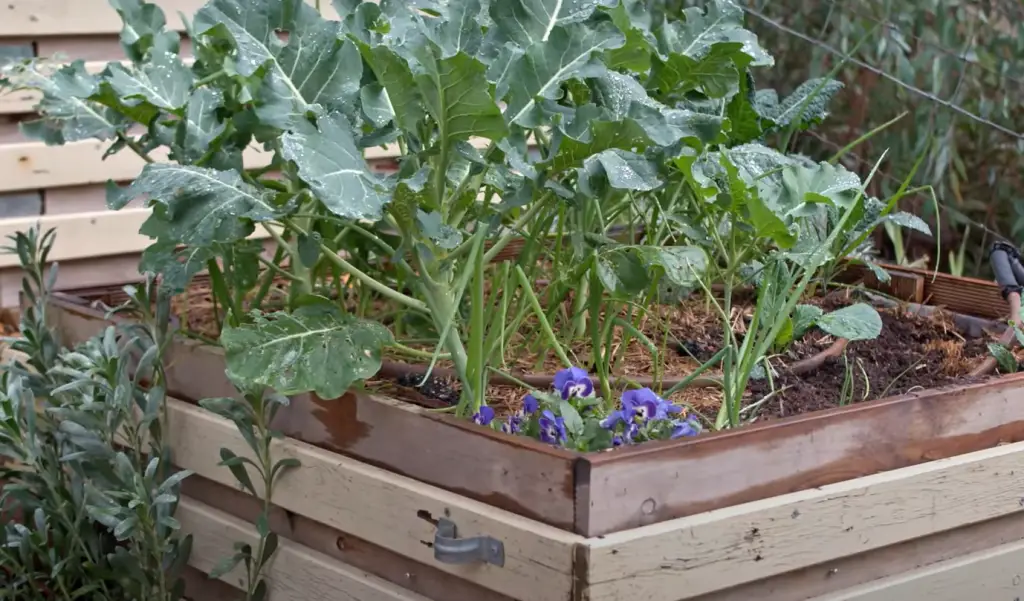
The tiers can be filled with colorful flowers or plants and you can even add features such as benches, swings, or hammocks to make the seating area even more inviting.
Trees as focal points
Trees are perfect for adding texture and height to a tiered garden. Consider planting trees at the highest tier level, as this will make them stand out and draw attention to your outdoor space.
Additionally, you can use shrubs or flowers to fill in the tiers below, creating interesting levels of texture and color.
A mix of steel
Adding a mix of materials to your tiered garden can help create an interesting aesthetic.
For example, try adding steel planters along with wooden raised beds for an eclectic feel. You can also use rocks or stones to add texture to the tiers and create extra planting opportunities.
Plant ornamental grasses
Ornamental grasses are a great way to add movement and texture to your tiered garden. They can be planted in the higher tiers to create a cascading effect and they also look great when combined with other flowers or plants.
FAQ
How do you make a tiered garden?
To make a tiered garden, start by choosing an area in your garden that you would like to use for the tiers.
Mark out the tiers and decide on their heights. Dig out the levels and add soil or compost as needed. Then, install your planters and begin planting your chosen flowers or plants.
What can I plant in a tiered garden?
You can plant all sorts of flowers, plants, and vegetables in a tiered garden. Choose plants that suit your desired aesthetic and will thrive in your climate. Consider adding ornamental grasses or vines for added texture and movement.
How do I care for a tiered garden?
Caring for a tiered garden is similar to caring for any other type of garden. Make sure to water your plants regularly, fertilise when necessary, and check for pests or diseases.
Additionally, you should take the time to deadhead any flowers that are starting to fade or die off.
What is a tiered backyard?
A tiered backyard is a garden that has been designed to create multiple levels or tiers. It can be used to showcase flowers, plants, and other decorative features while also creating an attractive aesthetic.
Tiered backyards are perfect for making the most of small spaces as they allow you to add extra planting opportunities without taking up too much room.
How do you have different levels of the garden?
You can create different levels in the garden by adding retaining walls or terraces. Retaining walls are great for creating height and providing stability while terraces help to divide up the area into separate tiers.
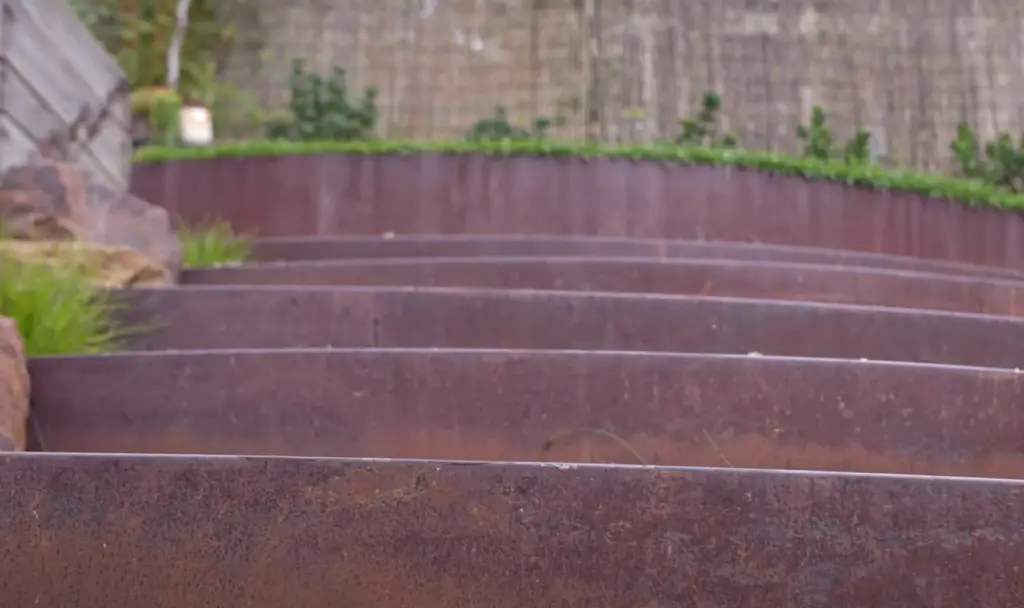
You can also use rocks or stones to add texture and interest to the tiers, as well as create extra planting opportunities.
How do you level a two-tier garden?
Levelling a two-tier garden is relatively easy. Start by marking out the tiers and deciding on their heights.
Then, dig out the levels to create the tiers and add soil or compost as needed. Finally, install your planters and begin planting your chosen flowers or plants.
What are the three golden rules of garden design?
The three golden rules of garden design are: use unity and repetition, create interest with contrast, and plan for seasonal color. Unity refers to creating a cohesive look by repeating certain elements throughout your garden, such as colours or materials.
Contrast helps to make the garden stand out by introducing different shapes, textures, and heights. Lastly, planning for seasonal color ensures that your garden will be full of vibrant blooms throughout the year.
What are the four types of gardens?
The four main types of gardens are formal, informal, cottage, and contemporary. Formal gardens are symmetrical and organised, with neatly trimmed hedges and precise lines. Informal gardens are more relaxed in style, often incorporating curved shapes and softer edges.
Cottage gardens have a vintage feel to them, featuring a mix of flowers in bright colours, while contemporary gardens are modern and sleek with clean lines and minimalistic designs.
What are the benefits of tiered gardening?
The main benefit of tiered gardening is that it provides the opportunity to create multiple levels or tiers in a garden, which can be used to showcase flowers, plants, and decorative features.
Additionally, it’s perfect for making the most of a small space as it allows you to add extra planting opportunities without taking up too much room. Tiered gardening is also an effective way to manage water and soil drainage, as well as create interesting pathways and structures in the garden.
What are the tips for tiered gardening?
When it comes to tiered gardening, there are a few tips you should keep in mind. First, make sure to set up your tires on higher ground so that water and soil can drain properly.
Additionally, use different materials such as rocks or stones to add texture and interest to the tiers.
Also, be sure to use plants that require the same amount of light and water so that they can thrive together. Finally, take the time to deadhead any flowers that are starting to fade or die off.
What is the best plant for tiered gardening?
The best plants for tiered gardening depend on your climate and personal preference.
Some popular choices include succulents, which are easy to care for and add a modern touch to the garden, as well as flowering plants such as petunias or daisies that will provide a burst of color.
What other features can you add to a tiered garden?
In addition to plants, there are several other features that you can add to a tiered garden. These include seating areas or benches, trellises and arbours, decorative pathways, and water features such as ponds or fountains.
You can also use lighting to add interest and create a cosy atmosphere in the evening. Additionally, adding decorative elements such as statues or sculptures is a great way to add visual interest to the garden.
What are some tips for maintaining a tiered garden?
Keeping your tiered garden looking its best requires regular maintenance. Be sure to water your plants regularly, prune any dead or overgrown branches, and fertilise your plants when needed.
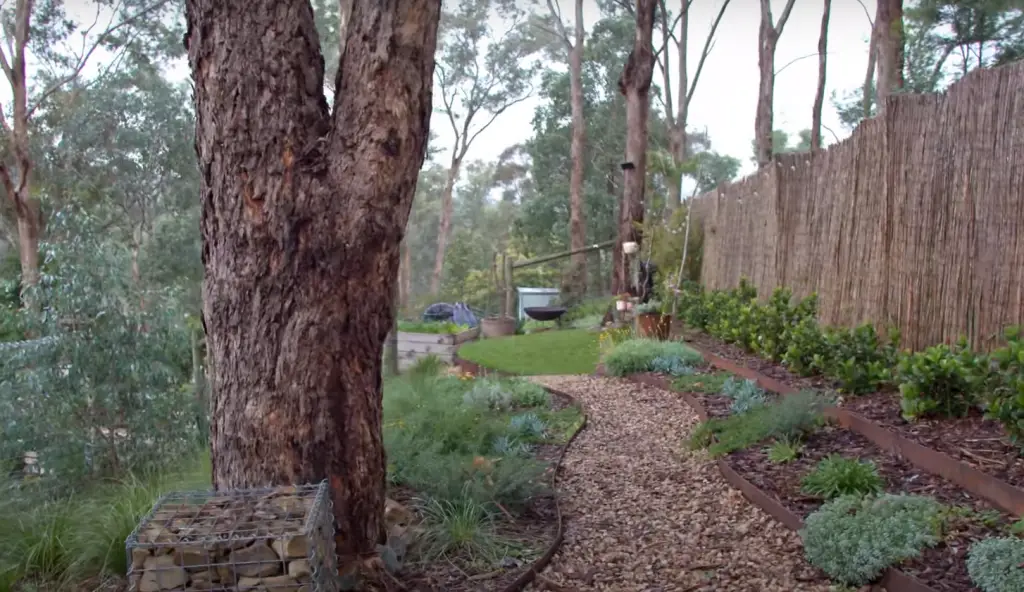
Additionally, add mulch or compost to help nourish the soil and keep it healthy. Finally, remove any weeds or debris from the garden to ensure it remains neat and tidy.
How can you make the most of a tiered garden?
To get the most out of your tiered garden, it’s important to consider unity, contrast, and seasonal color. Unity refers to creating a cohesive look by repeating certain elements throughout your garden, such as colors or materials.
Contrast helps to make the garden stand out by introducing different shapes, sizes, and colors.
Finally, choosing plants according to the season will help ensure that your garden is always looking its best. With these tips in mind, you’ll be able to create a beautiful and vibrant tiered garden.
How can I incorporate an edible garden into a tiered garden?
Incorporating an edible garden into a tiered garden is possible by using raised beds or vertical gardens. Raised beds are perfect for growing vegetables, herbs, and other edibles, as they provide excellent drainage and promote healthy soil.
Vertical gardens are great for small spaces or balconies, and they can be used to grow a variety of edibles such as tomatoes, peppers, eggplants, and more.
How can I make my tiered garden child-friendly?
Making a tiered garden child-friendly is all about creating spaces that are safe and fun for kids to explore. Consider adding a sandbox, playhouse, or swing set within the garden.
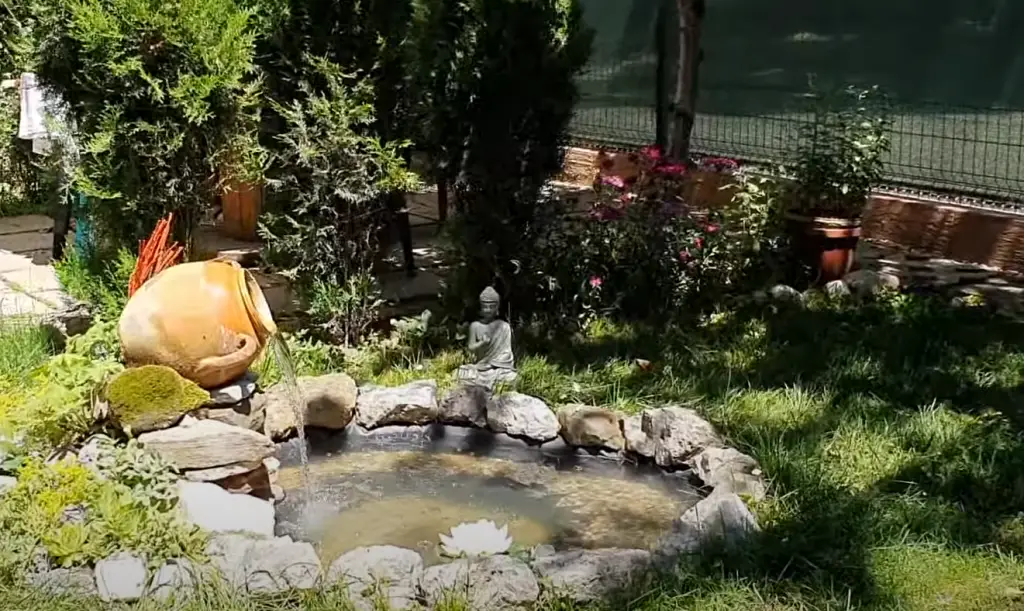
Additionally, you can use small stepping stones or pathways to create interesting nooks and crannies for children to explore.
Finally, you can add plants that attract butterflies or hummingbirds which will provide hours of entertainment for kids of all ages.
How do I choose the right plants for a tiered garden?
Choosing the right plants for a tiered garden is all about understanding your climate and soil conditions. It’s important to select native plants that are well-suited to your area, as they will require less maintenance and be more resilient.
Additionally, consider using plants with different textures, shapes, and colors to create visual interest in the garden. Finally, take into account how much sun or shade your tiered garden will receive before selecting plants.
How can I use native plants in my tiered garden?
Native plants are a great choice for tiered gardens as they will require less maintenance than non-native species. Additionally, native plants help to support the local ecosystem by providing food and habitat for wildlife.
When choosing native plants for your tiered garden, consider factors such as size, color, texture, and bloom times. Finally, make sure to select plants that are appropriate for your climate and soil conditions.
Why is landscaping important for a tiered garden?
Landscaping is an essential element of a tiered garden, as it helps to create interest and focus attention on the plants within the garden. Landscaping can also help to define spaces within the garden, making it feel more inviting and functional.
Additionally, landscaping can reduce runoff by preventing water from pooling in the garden, thus helping to keep your plants healthy. By considering landscaping as an important element of a tiered garden, you’ll be able to create a beautiful and inviting outdoor space.
Why is maintenance important for a tiered garden?
Regular maintenance is essential for keeping a tiered garden in top shape. Pruning and deadheading plants will help them to stay healthy, while removing weeds or debris from the garden will keep it looking neat and tidy.
Additionally, regular watering and fertilising are key to keeping plants vibrant and lush.
Does a tiered garden require any special tools or supplies?
Yes, a tiered garden does require certain tools and supplies. Gardening gloves, hand trowels, and pruning shears are essential for keeping your plants looking their best. A good quality hose and watering can will also come in handy when it comes to tending to the plants.
Do I need any special skills to create a tiered garden?
Creating a tiered garden does require some basic gardening knowledge and basic DIY skills. For example, you’ll need to know how to prepare soil and choose the right plants for your climate.
Additionally, it’s important to know how to properly prune and care for plants in order to keep them healthy and vibrant. Finally, if you’re installing a water feature or other structures in your tiered garden, you may need to hire a professional for help with the installation.
Does a tiered garden require any special care or maintenance?
Yes, a tiered garden does require regular care and maintenance in order to keep it looking its best. This includes things like pruning, deadheading, weeding, watering, fertilising and inspecting the plants for pests or disease.
Additionally, it’s important to conduct regular inspections of the structures within the garden, such as a water feature or seating area, to make sure they are in good condition.
By taking the time to properly care for your tiered garden, you’ll be rewarded with a beautiful outdoor space that will last for years to come.
Do I need to use a professional service for my tiered garden?
It is not necessary to hire a professional service to create and maintain a tiered garden, but it can be helpful in certain cases. If you’re planning on adding features such as walls, water features, or retaining structures, it may be wise to seek the help of a professional.
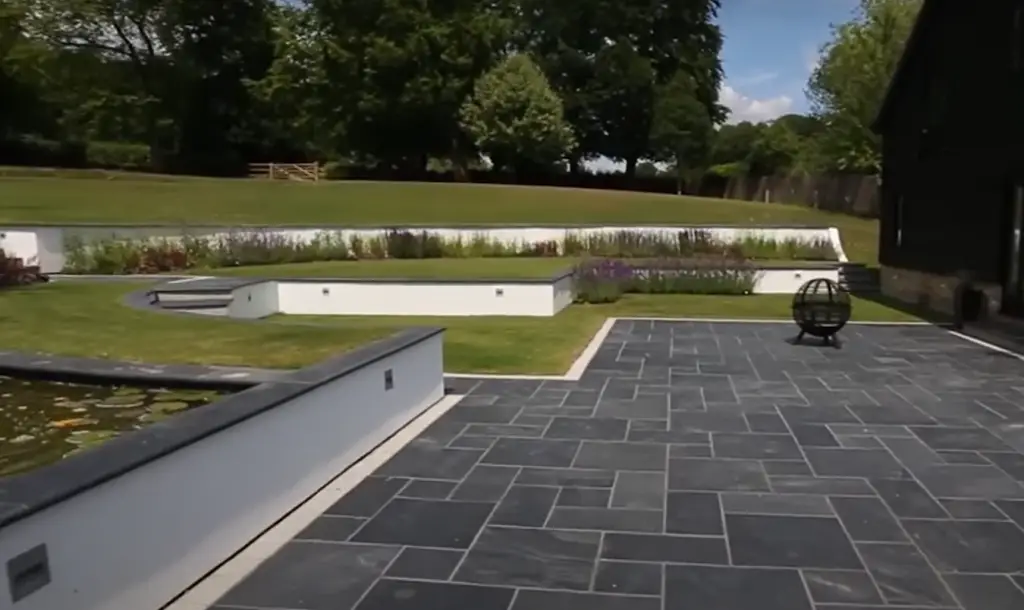
Additionally, if you don’t have the time or expertise to properly care for your tiered garden, a professional service can provide regular maintenance and upkeep.
Can I create a tiered garden on a budget?
Yes, it is possible to create a beautiful tiered garden on a budget. Start by shopping around for plants or seeds that are both affordable and appropriate for your climate. Additionally, try to repurpose materials from your home or yard, such as stones, wood, or even old furniture.
Can I make my tiered garden more inviting and functional?
Yes, adding elements like seating areas, birdbaths, or water features can transform your tiered garden into a beautiful and inviting outdoor space. Additionally, landscaping can help to define spaces within the garden, making it feel more comfortable.
Simple touches such as walkways or pathways can also add a sense of function to the garden, while providing a nice place to stroll. Finally, adding lighting can help to extend the use of your tiered garden into the evening hours.
Can I use my tiered garden for entertaining?
Absolutely! With a few simple additions, your tiered garden can become the perfect spot for outdoor entertaining. Adding seating and tables will make it more comfortable for guests, while providing enough space for any activities.
Consider adding a fire pit or outdoor kitchen to extend your gatherings into the evening hours. Finally, adding lights and decorations will help to make your tiered garden into a magical area that is perfect for entertaining.
Can tiered gardens be used year-round?
Yes, tiered gardens can certainly be used year-round. While certain plants will only bloom during certain times of the year, it is possible to select plants that provide interest throughout the seasons.
Additionally, adding hardscaping features such as pathways or fire pits can make your garden more inviting in all types of weather. With careful planning and maintenance, your tiered garden can become a beautiful outdoor area that you can enjoy all year long.
Which type of plants are best for a tiered garden?
The type of plants that are best for a tiered garden will depend on your climate and the level of sunlight in your outdoor space. Generally speaking, it is best to select plants that will thrive in your climate, as well as those with different bloom times throughout the year.
Additionally, selecting plants that are drought-tolerant and low-maintenance will help to keep your tiered garden looking its best.
Which type of soil should I use in my tiered garden?
When selecting the type of soil for your tiered garden, it is important to take into consideration the climate and drainage needs. Generally speaking, a well-draining soil with a neutral pH balance is best for most climates.
Additionally, adding organic matter such as compost or manure can help to improve the soil quality and provide essential nutrients for your plants.
How often should I water my tiered garden?
When it comes to watering your tiered garden, it is important to pay attention to the needs of each individual plant. Some plants may require more frequent waterings while others may need less.
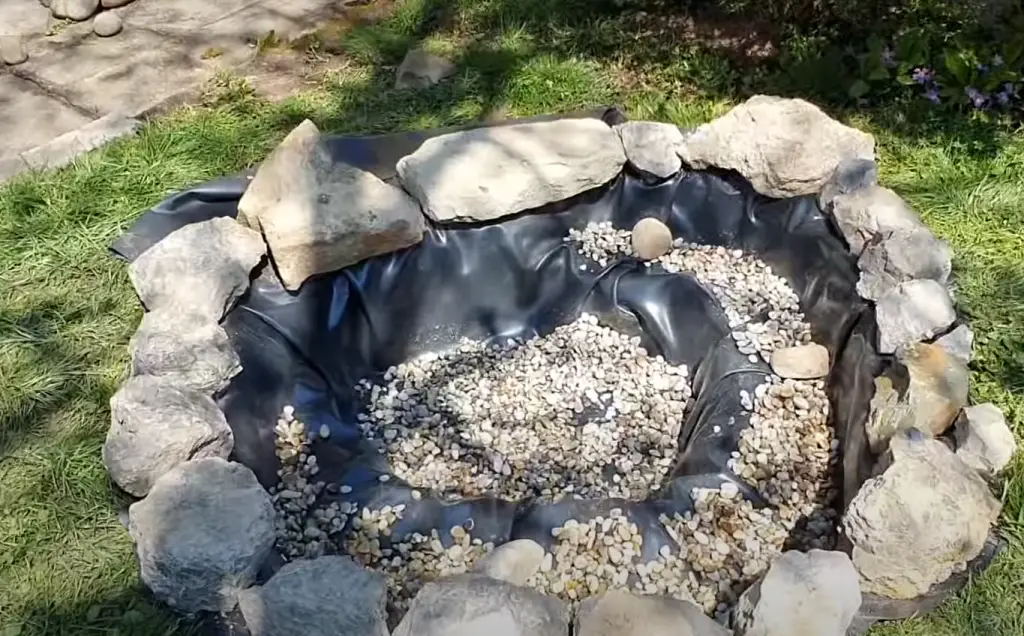
Additionally, if you live in an area with high temperatures, it is important to establish a regular watering schedule that takes into account the amount of direct sunlight your garden receives. Remember, overwatering can be just as detrimental to your plants as underwatering.
How can I prevent weeds from invading my tiered garden?
Mulching is one of the best ways to prevent weeds from invading your tiered garden. Using an organic mulch such as wood chips or shredded leaves will help to keep the soil moist and reduce the growth of weed seeds.
Additionally, regular weeding is also important to ensure that your plants are not being crowded out by weeds. Finally, using a pre-emergent herbicide before planting can help to reduce the number of weeds that will appear in your garden.
Useful Video:Tiered Garden -full project
Conclusion
Creating a tiered garden is a great way to add visual interest and function to your outdoor space. By selecting the right plants, adding hardscaping features, and using proper maintenance techniques, you can create a beautiful and inviting tiered garden that will last for years to come.
With these tips in mind, you can make sure that your tiered garden will be a stunning addition to your home.
Thanks for reading! We hope this post has been helpful in answering your questions on creating the perfect tiered garden. Happy gardening!
References:
- https://billyoh.com/extra/home-and-garden/landscaping/tiered-garden-ideas/





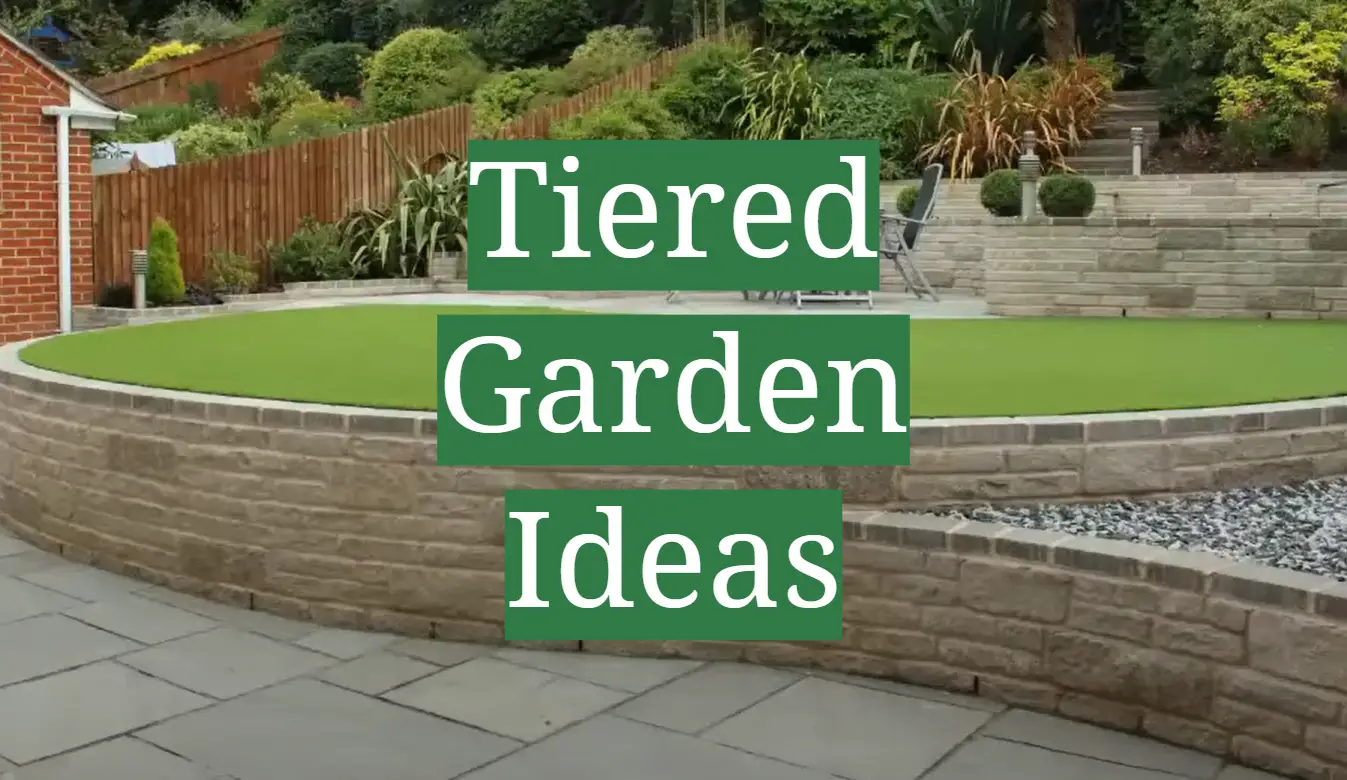




Leave a Reply
View Comments